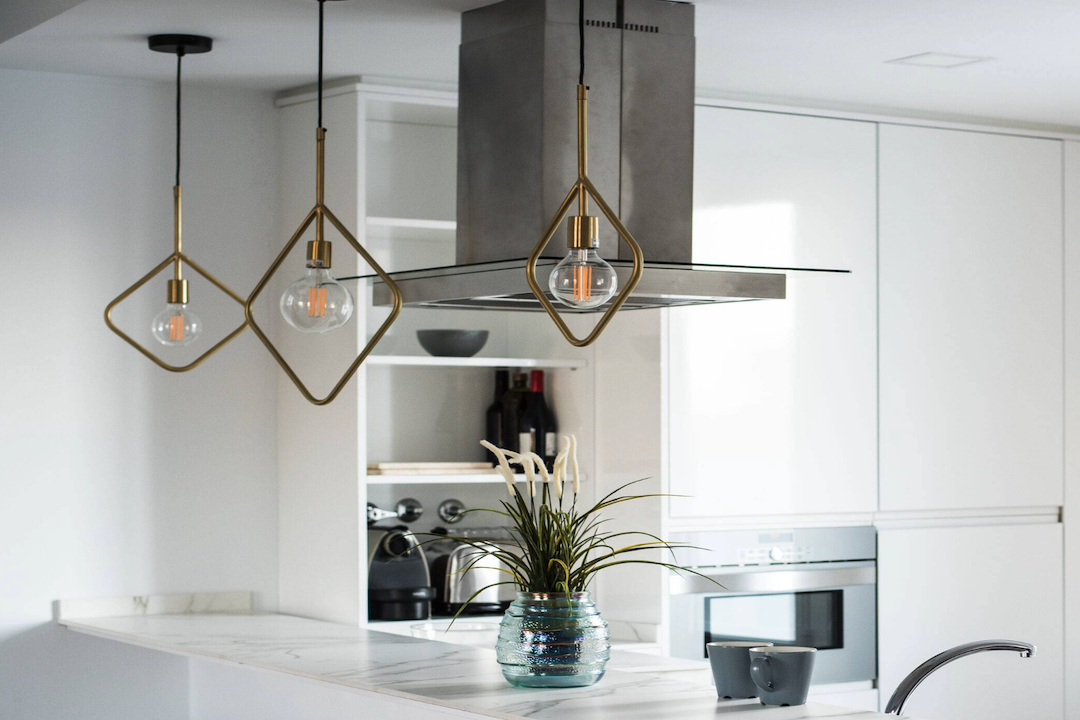Lighting plays a pivotal role in the kitchen, serving not only as a functional necessity but also as a key element in the overall aesthetic of the space. A well-lit kitchen enhances visibility, making it easier to prepare meals, read recipes, and perform various tasks safely. Poor lighting can lead to accidents, such as cutting oneself while chopping vegetables or misplacing ingredients.
Therefore, having adequate illumination is essential for both safety and efficiency. Moreover, the kitchen is often considered the heart of the home, where families gather to cook, eat, and socialize. The right lighting Rodovida can create an inviting atmosphere that encourages interaction and warmth.
Beyond functionality, lighting significantly influences the mood and ambiance of the kitchen. Different types of lighting can evoke various feelings; for instance, bright, white light can create an energetic environment ideal for cooking, while softer, warmer tones can foster a cozy atmosphere for family gatherings. The strategic use of lighting can highlight architectural features, such as a beautiful backsplash or custom cabinetry, adding depth and character to the space.
Thus, understanding the importance of lighting in the kitchen is crucial for homeowners looking to enhance both the practicality and aesthetic appeal of this vital area.
Choosing the Right Ceiling Lamp for Your Kitchen
Selecting the appropriate ceiling lamp for your kitchen involves considering several factors, including size, style, and functionality. The size of the lamp should be proportionate to the dimensions of the kitchen. A large, statement chandelier may overwhelm a small kitchen, while a tiny pendant light might get lost in a spacious area.
To achieve balance, measure the space where the lamp will hang and choose a fixture that complements those dimensions. Additionally, consider the height of your ceilings; a low-hanging fixture in a room with high ceilings may not provide adequate illumination for work surfaces. Style is another critical aspect when choosing a ceiling lamp.
The kitchen’s overall design theme—be it modern, rustic, or traditional—should guide your selection. For instance, sleek, minimalist designs work well in contemporary kitchens, while vintage-inspired fixtures can add charm to more traditional spaces. Furthermore, consider the finish of the lamp; materials like brushed nickel or polished chrome can lend a modern touch, while bronze or wrought iron may evoke a more classic feel.
Ultimately, the right ceiling lamp should not only illuminate but also enhance the kitchen’s design narrative.
Installation Tips for a Ceiling Lamp
Installing a ceiling lamp may seem daunting, but with proper preparation and tools, it can be a manageable DIY project. Before beginning installation, ensure that you have all necessary tools on hand, including a screwdriver, wire cutters, and a voltage tester. Safety should always be your top priority; turn off the power at the circuit breaker to avoid any electrical hazards during installation.
Once you have confirmed that the power is off, remove the old fixture if applicable and carefully follow the manufacturer’s instructions for your new lamp. When connecting wires, it is essential to match them correctly: typically, black wires are hot (live), white wires are neutral, and green or bare wires are ground. Securely twist the wire connections together and cover them with wire nuts to prevent any exposed wires from causing short circuits.
After securing all connections and ensuring that everything is properly installed according to local electrical codes, mount the fixture to the ceiling bracket and restore power to test your new lamp. If you are unsure about any step in this process or if your kitchen has complex wiring needs, consulting with a licensed electrician is advisable.
How to Coordinate Your Ceiling Lamp with Your Kitchen Decor
Coordinating your ceiling lamp with your kitchen decor requires an understanding of color schemes, materials, and overall design elements present in your space. Start by assessing your existing decor—what colors dominate your kitchen? Are there specific materials that stand out?
For example, if your kitchen features warm wood tones and earth-inspired colors, consider selecting a ceiling lamp with similar hues or materials that complement this palette. A wooden pendant light or one with warm brass accents could harmonize beautifully with such decor. In addition to color and material considerations, think about how the style of your ceiling lamp interacts with other elements in your kitchen.
If you have modern appliances and sleek cabinetry, a contemporary fixture with clean lines will likely fit seamlessly into the design. Conversely, if your kitchen has vintage elements like retro appliances or farmhouse-style cabinetry, a more ornate or rustic lamp could enhance that aesthetic. By thoughtfully coordinating your ceiling lamp with existing decor elements, you can create a cohesive look that elevates the entire space.
Energy-Efficient Options for Kitchen Ceiling Lamps
As energy efficiency becomes increasingly important in home design, many homeowners are seeking out sustainable lighting options for their kitchens. LED ceiling lamps are among the most energy-efficient choices available today. They consume significantly less energy than traditional incandescent bulbs while providing bright illumination that can last up to 25 times longer.
This longevity not only reduces energy costs but also minimizes waste over time. Many LED fixtures now come in various styles and designs, making it easy to find an option that suits your kitchen’s aesthetic. Another energy-efficient option is fluorescent lighting.
While they may not have the same warm glow as incandescent bulbs, modern fluorescent fixtures have improved significantly in terms of color rendering and design versatility. They are particularly effective in task-oriented areas of the kitchen where bright light is essential for food preparation. Additionally, consider smart lighting solutions that allow you to control brightness levels and color temperatures through mobile apps or voice commands.
These systems can optimize energy use by allowing you to adjust lighting based on time of day or occupancy.
Adding Dimmer Switches for Versatile Lighting
Adjusting Brightness for Different Activities
For instance, during meal preparation or cooking sessions, you may prefer bright lighting to ensure visibility and safety. However, when hosting dinner parties or enjoying family meals, softer lighting can create a more intimate atmosphere conducive to conversation and relaxation.
Installation and Compatibility
Installing dimmer switches is relatively straightforward and can often be done as a DIY project if you have basic electrical knowledge. Ensure that you select dimmer switches compatible with your chosen light bulbs—some LED bulbs require specific dimmers to function correctly without flickering or buzzing.
Experimenting with Brightness Levels
Once installed, experiment with different brightness levels to find what works best for various occasions in your kitchen. This flexibility not only enhances functionality but also allows you to tailor the ambiance of your space to suit your needs.
Maintenance and Cleaning Tips for Kitchen Ceiling Lamps
Regular maintenance and cleaning of your kitchen ceiling lamps are essential for ensuring their longevity and optimal performance. Dust and grease can accumulate on light fixtures over time, diminishing their brightness and affecting their appearance. To keep your lamps looking their best, establish a cleaning routine that involves dusting them regularly with a soft cloth or microfiber duster.
For fixtures made from glass or metal, consider using a gentle cleaning solution to remove any stubborn grime without scratching surfaces. When performing maintenance on your ceiling lamps, always ensure that they are turned off and cool before touching them. If possible, remove bulbs from fixtures during cleaning to access hard-to-reach areas more easily.
Additionally, check for any signs of wear or damage during cleaning; frayed wires or loose connections should be addressed promptly to prevent safety hazards. By maintaining your ceiling lamps regularly, you can ensure they continue to provide both functionality and beauty in your kitchen.
Creative Ways to Enhance Your Kitchen Lighting with Multiple Ceiling Lamps
Utilizing multiple ceiling lamps in your kitchen can create layered lighting that enhances both functionality and aesthetics. Instead of relying on a single fixture as the primary source of light, consider incorporating various types of ceiling lamps throughout the space to achieve a more dynamic effect. For example, pendant lights over an island can provide focused task lighting while recessed lights offer general illumination across the room.
Another creative approach is to mix different styles of ceiling lamps to create visual interest. Combining modern pendant lights with vintage-inspired fixtures can add character and depth to your kitchen design. Additionally, consider varying heights when installing multiple lamps; hanging some fixtures lower than others can create an engaging visual rhythm that draws the eye throughout the space.
By thoughtfully layering different sources of light and styles of fixtures, you can transform your kitchen into an inviting environment that caters to both practical needs and aesthetic desires.


